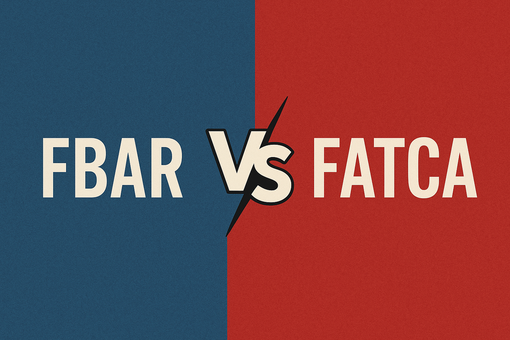Before You Plan Retirement Abroad, Find Out If Your Plan Is Qualified

If you are considering the option of retirement abroad, there are some important guidelines of which you should be aware.
Are you planning on retiring abroad? If so, you will have to take a serious look at your retirement plan(s) and make sure they will work the way you need them to from a tax perspective. Are they qualified accounts? When you understand the various types of both foreign and domestic investments and how they will affect your taxes, you will be empowered to make any changes to maximize your retirement accounts and remain in good standing with the IRS.
Before we take a look at the manner in which qualified and nonqualified plans are treated, let’s first take a look at what it means to be a qualified plan.
A qualified plan is a plan which is written and executed in accordance with the IRC (Internal Revenue Code). The IRC guidelines are extensive, and it is important for a company retirement plan executor to review the content carefully. In a qualified plan, individual taxpayers may deduct plan contributions from their taxable income on their US expat tax return. This includes the 401(k) and the traditional IRA – ROTH IRAs are not included. Additionally, if your employer matches your contribution, it will also be counted as a nontaxable contribution.
In addition to the 401(k) and IRAs, the SEP (Simplified Employee Pension) and SIMPLE ( Savings Incentive Match Plan for Employees) are also qualified plans. A retirement plan that doesn’t meet the IRC guidelines is regarded as a non-qualified plan, and this includes most foreign pension plans.
If you move overseas, the tax advantages to your qualified pension plans will remain, and you may transfer your 401(k) into an IRA.
When you leave the United States to live abroad, your qualified plan will retain its tax advantages. The earnings in your plan will continue to accumulate on a tax-deferred basis. Remember, though, when you start receiving distributions from your qualified plan(s), the funds you receive will be taxed at the rate applicable at the time of withdrawal.
When you move overseas and you no longer have a privilege of employer matching contribution, it is worthwhile to transfer the amount in your 401(k) to an IRA account. The IRA will offer you a greater variety of investment options.
Contribution limit to IRA is much lower than contributions you could make towards the 401(K) while you were an employee. For instance, your IRA contribution limit is $5,500 ($6,500 for those 50 or older) of your earned income. If you used the FEIE (Foreign Earned Income Exclusion) to exclude all of your income, then it is make no sense for you to make contributions to Traditional IRA because you have no taxable income to reduce. It is a better option to contribute to ROTH IRA if you qualify by your income. Rollover of your 401(K) directly to ROTH IRA is another option to consider.
When you are planning your taxes, keep in mind that contribution limits are not applicable to rollovers.
If you are limited by the income restrictions and cannot contribute directly to ROTH IRA, you may still roll over your prior employer-sponsored 401(K) to ROTH IRA instead of Traditional IRA. While rollover from 401(K) to Traditional IRA is non-taxable, rollover to ROTH IRA would be considered a “Roth conversion” and converted amount will be included in your taxable income.
Can you open the new IRA plan in the US while working abroad?.
Legally you can but most banks will not accept you as a new client if you do not have a U.S. address. They have their own compliance requirements and do not want to deal with the international transactions. It is more common for expats to have retirement plans through their foreign employer. Foreign pension plans usually have much higher contribution limits than U.S. plans, and investment opportunities are wider. However the majority of the foreign plans are considered by the IRS as Non-qualified retirement plans.
Non-qualified retirement plans are those which do not meet the requirements set by the IRS. Your foreign pension plan is likely a non-qualified plan.
If you make contributions to a non-qualified retirement savings plan, you are not able to deduct your contributions from your US expat tax return. If your employer makes contributions on your behalf, you must include these when reporting your taxable income. If you have an employer-sponsored deferred plan, the growth in this plan may not have to be claimed as income as long as you are not deemed a highly compensated employee (receiving compensation of $115K or more or being one of the top 20% of the highest earners in the company for which you work).
If you are a highly compensated employee, any earnings inside the foreign plan would need to be reported as income and included in your US expat tax return. This is true even if the funds from the growth weren’t actually received during the tax year. You are encouraged to keep track of your distributions which have been taxed and those which have not been taxed. This is important, because there will be different rules when you begin receiving distributions. You will need to pay taxes on that which hasn’t already been taxed, and that which has already been taxed will be tax-free upon distribution.
The preceding information is true for most foreign pension plans. If there is a tax treaty between your host country and the United States, there may be provisions in the treaty that allow for different treatment of foreign retirement accounts. For example, Belgium, Germany, Netherlands and the UK make allowances for the exclusion of contributions in certain situations. There also a similar exemption for certain Canadian retirement plans. Refer to this IRS list of tax treaties to get more information. You may need the help of a tax professional to understand the provisions of the treaty.
You may be required to file additional forms. Whether or not you will have to file each form depends on the structure of your foreign, non-qualified retirement savings plan.
You may be required to file one or more of the following forms:
- Form 3520 (Foreign trust transactions and recipient of certain foreign gifts)
- Form 3520-A (Foreign trust transactions with a US Owner)
- Form 8621 (Shareholder reporting of Qualified Electing Fund or Passive Foreign Investment Company)
- Form 8938 (Reporting of foreign assets which exceed certain thresholds)
- Form 8833 (Treaty-Based Return Position Disclosure )
You are encouraged to consider various aspects of your foreign business practices and see if you are required to file any of the aforementioned forms.
While the previously listed forms are for informational purposes only and do not trigger any tax liability, the penalties for failing to file or filing improperly are harsh. Here are some considerations which will affect whether or not one or more of these forms is required:
- Is the fund private, self-run, or employee sponsored?
- Did you fund more than 50% of the plan’s balance?
- Is any portion of the plan invested in foreign mutual funds?



